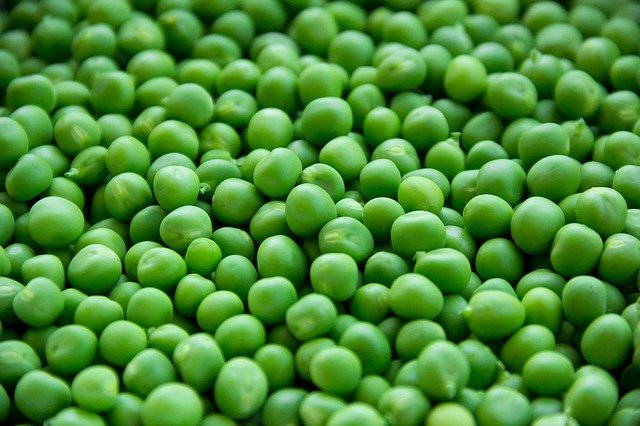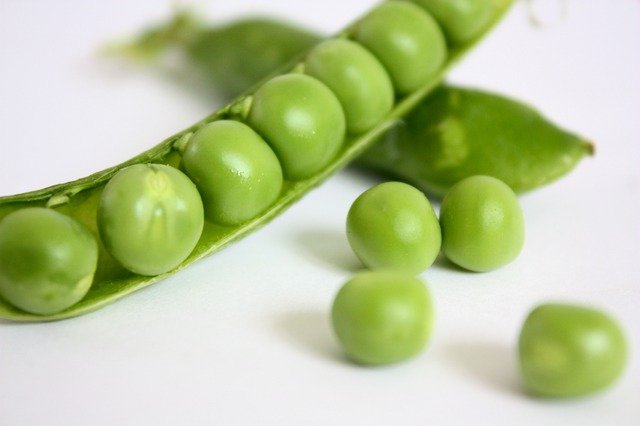A spring vegetable, the pea is a very complete food, rich in fibre, filling and antioxidant. Fresh, canned or frozen, what are the nutritional differences? How to cook it and the benefits of peas?
Summary
- The health benefits of peas
- Health precautions
- Fresh peas, canned or frozen, what differences?
- Storage of fresh peas
- Cooking green peas and cooking tips
The fresh pea is impatiently waiting for itself in spring. Do not miss it because its season is short: it arrives in May and leaves the stalls past the month of July.
The health benefits of Peas
Anticonstipation: Peas are a good source of fibre. It provides almost 6 g per 100 g or almost a quarter of the recommended daily intake (25 g). Fibre stimulates bowel movements from top to bottom, which increases the frequency of bowel movements. They also improve the quality of the intestinal microbiota by allowing the development of good bacteria.
Satisfying: The pea is almost three times richer in protein than other vegetables. It provides 5.8 g per 100 g. On the other hand, it contains more carbohydrates, but its glycemic index (IG 35 if it is fresh or frozen, IG 45 in a box) remains low. It therefore slightly increases the blood sugar level (blood sugar) while promoting satiety.

Good for the eyes: Lutein and zeaxanthin are components of the pigment in the macula, a small area of the retina. They are natural filters for UV radiation, especially blue light. They also protect the eyes from free radical attacks. If there is no official recommended intakes, the Areds study recommends intakes of 10 mg of lutein and 2 mg of zeaxanthin per day to prevent age-related macular degeneration. The pea provides 2 mg per 100 g.
Antioxidant: The pea is a good source of beta – carotene (414 μg / 100 g) and manganese (0.32 to 0.4 mg / 100 g depending on whether it is cooked or raw), i.e. 13 to 16% of the intakes nutritional recommendations. These two elements are important in the fight against oxidative stress.
Count 150 to 200 g of peas or ½ plate for a portion of peas. Good to know: 1 kg of fresh peas gives only between 400 and 500 g when shelled.
Health precautions
You are allergic to grass pollens: Reactions (itching and burning sensations in the mouth, throat, etc.) with peas are possible.
You suffer from irritable bowel syndrome: Peas containing fermentable sugars (oligo-saccharides), they can cause pain. Without removing them, it is better to consume them in small quantities to limit the risk of bloating.
You follow a low residue diet: Certain pathologies such as intestinal diverticulitis, Crohn’s disease, diarrhea … require a diet low in residues, or peas are rich in fiber and can be contraindicated indicated.
Fresh peas, canned or frozen, what differences?
If in terms of fibre and protein intake, there are few differences, it is not the same on the caloric level, on the carbohydrate and especially sodium contents.
The fresh pea is the least caloric (61.4 cal / 100 g cooked) and the least carbohydrate (4.7 g / 100 g) and the least sodium (7.1 mg / 100 g) ). Then, it is better to opt for frozen peas which provide 65.8 cal / 100 g, 7.9 g of carbohydrates and 72 mg of sodium. As for canned peas, they are the most caloric: 81.5 cal / 100 g, the richest in carbohydrates: 10.7 g / 100 g and especially the richest in sodium: 257 mg / 100 g!
Storage of fresh peas
They are chosen with a very green, firm and plump pod so that they are of a good size. Avoid yellow pods, the peas may be too ripe, even sprouted or show traces of mold. They are kept for two days in the vegetable drawer of the refrigerator.
Cooking green peas and cooking tips
- How to keep their beautiful green colour when cooked? At the end of cooking, add a pinch of bicarbonate or immerse the peas in a bowl of very cold water.
- How to cook them well? In the pressure cooker, in 5 to 10 min; in a pot of boiling water, in 12 to 18 min, or in a casserole, in 15 min.
- How to reinforce their taste? Cook them with a pinch of salt and a pinch of sugar.
- How to soften their skin? Before cooking, marinate them in a little softened butter, sugar and salt for 30 minutes.
ADDITIONAL READS:
Fasting Method in Intermittent: How to slim down with IF
Hitting Menopause : Nutrition & Wellness for you
Anxiety: How to tell the difference with stress and anxiety
Fitness with a friend: How to train with a partner for better results

